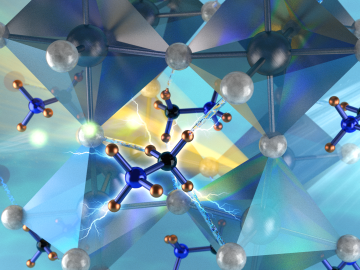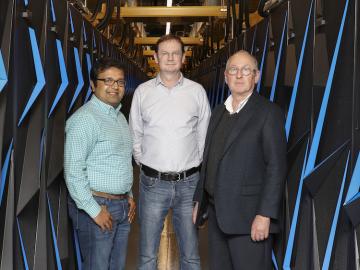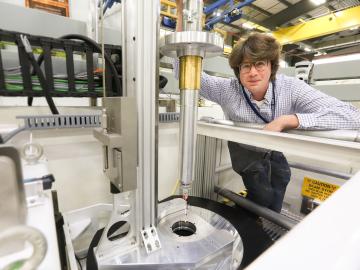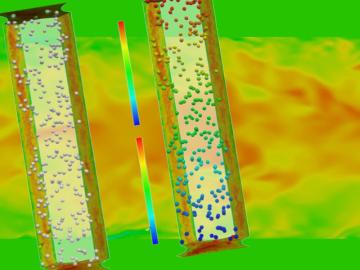
Filter News
Area of Research
- Advanced Manufacturing (7)
- Biological Systems (2)
- Biology and Environment (21)
- Building Technologies (2)
- Clean Energy (118)
- Climate and Environmental Systems (4)
- Computational Biology (1)
- Computer Science (2)
- Energy Frontier Research Centers (1)
- Energy Sciences (1)
- Fossil Energy (1)
- Fuel Cycle Science and Technology (1)
- Fusion and Fission (6)
- Fusion Energy (6)
- Isotopes (5)
- Materials (104)
- Materials for Computing (5)
- National Security (16)
- Neutron Science (54)
- Nuclear Science and Technology (36)
- Nuclear Systems Modeling, Simulation and Validation (3)
- Quantum information Science (3)
- Sensors and Controls (2)
- Supercomputing (61)
Date
News Topics
- 3-D Printing/Advanced Manufacturing (44)
- Advanced Reactors (18)
- Artificial Intelligence (31)
- Big Data (20)
- Bioenergy (24)
- Biology (17)
- Biomedical (30)
- Biotechnology (7)
- Buildings (14)
- Chemical Sciences (17)
- Clean Water (6)
- Climate Change (30)
- Composites (8)
- Computer Science (71)
- Coronavirus (23)
- Critical Materials (6)
- Cybersecurity (7)
- Decarbonization (21)
- Education (1)
- Emergency (1)
- Energy Storage (31)
- Environment (50)
- Exascale Computing (8)
- Fossil Energy (2)
- Frontier (7)
- Fusion (22)
- Grid (16)
- High-Performance Computing (16)
- Isotopes (25)
- ITER (1)
- Machine Learning (16)
- Materials (15)
- Materials Science (60)
- Mathematics (4)
- Mercury (2)
- Microelectronics (1)
- Microscopy (15)
- Molten Salt (6)
- Nanotechnology (28)
- National Security (16)
- Net Zero (5)
- Neutron Science (48)
- Nuclear Energy (49)
- Partnerships (11)
- Physics (26)
- Polymers (17)
- Quantum Computing (10)
- Quantum Science (29)
- Security (12)
- Simulation (12)
- Space Exploration (7)
- Statistics (2)
- Summit (23)
- Sustainable Energy (40)
- Transformational Challenge Reactor (5)
- Transportation (34)
Media Contacts


Using novel machine learning techniques, a research team from the Department of Energy’s Oak Ridge National Laboratory is teaching electronic devices how to speak for themselves.
University of Wisconsin-Madison engineers have added a new dimension to our understanding of why straining a particular group of materials, called Ruddlesden-Popper oxides, tampers with their superconducting properties. The findings, published in the journal Nature Communication...


Nearly a dozen scientists across Oak Ridge National Laboratory are teaming with medical researchers and leveraging ORNL’s biggest science tools to solve a modern-day biology grand challenge: unlocking the secrets of disordered proteins. These flexible molecules are believed to constit...




It may take a village to raise a child, according to the old proverb, but it takes an entire team of highly trained scientists and engineers to install and operate a state-of-the-art, exceptionally complex ion microprobe. Just ask Julie Smith, a nuclear security scientist at the Depa...

The intrinsic beauty of bubbles—those thin watery spheres filled with air or other gases—has long captured the imagination of children and adults alike. But bubbles are also a linchpin of nuclear engineering, helping to explain the natural world, predict safety issues and improve the...


